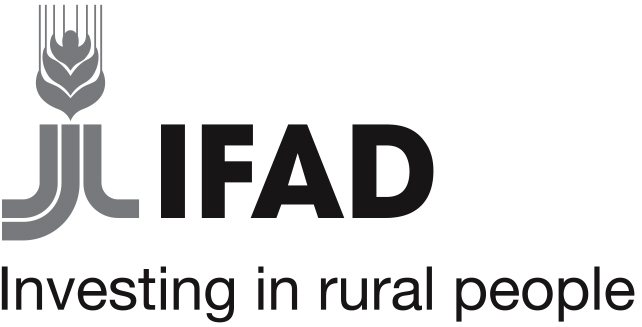Conservation Agriculture in Moldova
"The project doubled the area farmed with conservation agriculture from 40,000 to 80,000 hectares."
BACKGROUND
Drought caused by climate change has impacted crop yields and even led to crop failure for farmers in Moldova.
Conservation agriculture (CA) practices help build resilience against drought by protecting the structure of the soil, making it more fertile and able to retain moisture.WHAT’S INVOLVED
Adopting new agricultural practices
Although CA techniques like crop rotation had been practiced in Moldova, they were on a minor scale. Through training on demonstration plots and subsidies on equipment, the project doubled the area farmed with conservation agriculture from 40,000 to 80,000 hectares.
Adapting to climate change
CA is recognized as an important tool in adapting to drought caused by climate change. In the medium to long term it can improve crop yield, increase yield stability and even overcome crop failure. As an additional benefit, it reduces fertilizer costs as organic matter is allowed to build up in the soil.EXPLORE THIS SOLUTION
The CA project can offer
- A model for funding and supporting agricultural change on a national scale
- Proven techniques to build resilience against climate change through low-impact tilling and diverse planting
Show Full Solution
Summary
To mitigate the effects of climate change and droughts and enhance farmers’ resilience, an IFAD-funded project implemented in Moldova introduced conservation agriculture techniques, which involve minimum mechanical soil disturbance, permanent soil cover and crop rotation. The benefits include improved soil fertility, increased yield (especially when associated with other GAP (good agricultural practice) technologies, such as early sowing or addition of fertilizers) and yield stability; moisture retention capacity, and soil structure, thus making agriculture more resilient to climate change. Improved soil fertility and building up of organic matter in the soil also reduces the requirement of fertilizer.
Challenge
Inclement weather, mainly drought, resulting from climate change is affecting farming in Moldova, causing increasing crop failure and reduction in yields. Conservation agriculture has been practiced by some farmers in the country, but still on a very limited scale: only about 80,000 hectares are under conservation farming practices, out of 2.5 million hectares of total arable land in Moldova. Conservation agriculture techniques have been introduced on a larger scale, given the increasing likelihoods of extreme weather events.
Solution
Conservation agriculture (CA), which is increasingly regarded as one of the important climate change adaptation measures, has been introduced in Moldova in response to a series of climate-related events, such as serious droughts. The technique, which is part of GAP, encompasses three principles:
- continuous minimum mechanical soil disturbance (including no-till and mini-till technology)
- permanent soil cover; and
- diversification of crop species grown in sequences (i.e. crop rotation).
Results
- CA is helping farmers in Moldova to strengthen the resilience of their agricultural activities to frequent climatic and economic shocks. A growing number of farmers are currently adopting the following measures:
- converting their production systems to conservation agriculture
- diversifying their crops and thereby reducing the dependence on monocultures that are more sensitive to climate change
- receiving practical training on established demonstration plots.
- With the help of the IFAD-funded project, areas under CA has increased from 40,000 ha to 80,000 ha.
- To date conservation agriculture in Moldova has focused on field crops and is largely practiced by large-scale farms, though it also included the rehabilitation and establishment of protective multipurpose shelterbelts and grassland restoration plots.
- While it is still too early to assess the overall effectiveness of CA in the country, as the implementation experience is limited, the list of activities undertaken so far shows good progress. These include: the purchase of equipment and machinery for the demonstration plots (mainly deep seeding machines and tractors), which were subsidized 50 per cent by the project up to US$50,000 for each plot; and practical technical support for the demonstration plots, provided under a USAID-supported “Farmer- to-Farmer Programme”.
Lessons learned and potential for replication
A number of important lessons have emerged to date:
- Conservation agricultural practices have had significant yield benefits in the medium to longer term and can overcome crop failure risks even in marginal environments;
- Adoption of at least two conservation agriculture principles (minimum tillage and/or mulching/crop associations/rotation) increased food production and efficiency of labour;
- In a majority of cases, a yield increase was achieved using conservation agriculture treatments rather than conventional control treatments. However, this was often achieved only after two to five cropping seasons, depending on the site and farmer’s circumstances, the systems applied, and the quality of extension services assisting in implementing the work.
- Conservation agriculture systems have distinct labour benefits, especially when direct seeding is practiced and weeds are controlled by herbicides;
- The demand for conservation farming has not been properly established due to lack of clear understanding of the benefits and costs of the technologies associated with it and requires a better specification and dissemination of results from the experience so far in previous IFAD projects and its relevance for farmers of different size of holdings;
- Implementation of the conservation-farming programme to date is heavily dependent on the availability of matching grants; and
- Although the programme was designed to introduce smallholder farmers to climate-resilient agricultural practices and technologies, to date most of the activities have mainly involved large-scale farmers.
Next steps
As limits to conservation agriculture adoption and scaling-up exist, the next step is to address them. A key factor here is an increase in the availability and affordability of inputs (herbicide, fertilizer and mechanization) without project support or subsidies. In the case of family farming there are also problems with the distribution of family workload and gender issues, farmers’ risk tolerance, land tenure issues, conflicting government policies, lack of effective extension services, opportunities for local manufacturing and maintenance of mechanization, and weak output markets.
Work on climate change is expected to trigger a policy change process to boost conservation agricultural adoption, mainstreaming conservation agriculture into rural development and planning, and supporting small-scale private agro-forestry investments. There is also a need to develop a comprehensive set of guidelines regarding conservation agriculture for the smallholder farmers that may not have access to agriculture equipment.
Last update: 09/08/2018


